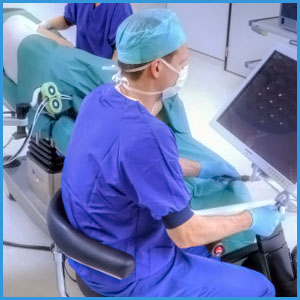| |
The term ‘Head and Neck Cancer’ encompasses a wide range of tumors that occur in several areas of the head and neck region, including the nasal passages, sinuses, mouth, throat, larynx (voice box), swallowing passages, salivary glands, and the thyroid gland. Skin Cancers that develop on the scalp, face, or neck may also be considered Head and Neck Cancers. |
| |
Each year, thousands of Indians are diagnosed with a head or neck cancer (not including Skin Cancers that occur in the region). Most of these cancers are preventable. Head and Neck Cancer can develop in anyone, but people who use tobacco (including cigarettes, cigars, pipes, and smokeless tobacco) or drink alcohol excessively are much more likely than others to develop the disease. |
| |
TYPES OF HEAD & NECK CANCER |
| |
There are many different types of Head and Neck Cancer. Several of them are described below. Most Head and Neck Cancers are termed squamous cell carcinomas, because they begin in the flat squamous cells that form a thin outer layer on many parts of the body. When a cancer is limited to that layer of cells, it may be called a carcinoma in situ. When it has grown beyond that layer and moved into deeper tissues it may be termed an invasive squamous cell carcinoma. Cancers that arise in glandular cells, such as those in the salivary glands, are called adenocarcinomas. |
| |
Oral cancer is cancer that arises in the mouth, or oral cavity. The oral cavity includes the lips, the gums and the area behind the wisdom teeth, the inside of the lips and cheeks, the floor and roof (hard palate) of the mouth, and the front two-thirds of the tongue. |
| |
Laryngeal cancer begins in the larynx, an organ also known as the voice box. The larynx sits at the top of the trachea, the tract that leads to the lungs. Air passes through the larynx on the way to the lungs. The vocal cords, two bands of muscle, are found within the larynx and are used for speech. The larynx also prevents food from entering the lungs. The larynx is visible on most men's throats as the Adam's apple. |
| |
Nasal cavity and paranasal sinus cancers are found in the tissues that line these hollow structures. The paranasal sinuses are hollow areas in the bones of the face near the nose that produce mucus. The nasal cavity is found just behind the nose and is used to pass air to the throat. |
|
 |
|
| |
Nasopharyngeal cancer is found in the nasopharynx, the uppermost portion of the throat (pharynx). It begins just behind the nose and extends to the oropharynx, the portion of the throat found just behind the mouth. It also includes two openings that lead to the ears. (The entire throat is called the pharynx, and is made up of the nasopharynx, the oropharynx just below that, and the hypopharynx, the lower region that meets the esophagus.) |
| |
Oropharyngeal cancer is found in the section of the throat (oropharynx) located just beyond the mouth. The region also includes the base of the tongue, the soft palate (the soft area just beyond the roof of the mouth), and the area around the tonsils. |
| |
Hypopharyngeal cancer is found in the hypopharynx, the uppermost portion of the esophagus (the tube through which food travels to the stomach). The hypopharynx surrounds the larynx. |
| |
Salivary gland cancer is found in the salivary glands, the structures that produce saliva to keep the mouth from drying out and aid in the digestion of food. Salivary glands may be found under the jaw, in front of the ears, underneath the tongue, and in other areas of the upper aerodigestive passages including the nose, sinus, mouth, and throat. |
| |
Thyroid cancer develops in the thyroid gland, a small butterfly-shaped structure that wraps around the front of windpipe in the lower part of the neck. The thyroid gland is the source of important hormones that help regulate metabolism, blood pressure, heart rate, temperature and other functions. |
| |
SYMPTOMS |
| |
Below are some of the symptoms and warning signs of Head and Neck Cancer. Many of these symptoms can be caused by other, non-cancerous conditions as well. See your doctor if you notice any of these problems. |
| |
 |
• A sore in the mouth that won't heal (the most common symptom) or that bleeds easily |
• A red or white patch in the mouth that doesn't go away |
• Frequent nosebleeds, ongoing nasal congestion, or chronic sinus infections that do not respond to treatment |
• Persistent sore throat |
• Persistent hoarseness or a change in the voice |
• Pain in the neck, throat, or ears that won't go away |
• Blood in the sputum |
• Difficulty in chewing, swallowing, or moving jaws or tongue |
• Numbness in the tongue or other areas |
• Loosening of teeth |
• Dentures that no longer fit |
• A lump or swelling in the neck |
• Changes in a mole or discoloration, or a sore on the skin that is crusting, ulcerated, or fails to heal (these are also signs of Skin Cancer). |
|
|
| |
DIAGNOSIS |
| |
Our doctors perform any of several types of tests that can help to make a definitive diagnosis of a Head and Neck Cancer and to determine the stage of the cancer, or how far it has progressed. |
| |
PHYSICAL EXAMINATION AND HISTORY |
| |
First, the doctor or nurse will take a complete medical history, noting all symptoms and risk factors. Then you will have a thorough examination of the head and neck area, during which the doctor will feel for abnormalities and take a look at the inside of your mouth and throat. |
| |
ENDOSCOPY |
| |
The doctor may use mirrors and lights to examine hard-to-see areas and may also use a flexible, lighted tube to examine areas that are less accessible. The tube may be inserted through the nose or mouth; an anesthetic spray may be used to make the examination more comfortable. This examination is called a Nasopharyngoscopy, Pharyngoscopy, or Laryngoscopy, depending on which area is examined. Occasionally, this type of examination will be done while the patient is under general anesthesia so a very thorough inspection can be done; this is called a Panendoscopy. |
| |
IMAGING TESTS |
| |
The doctor may also suggest several other tests, including imaging procedures such as a CT or computed tomographic scan (a special type of x-ray), an MRI or magnetic resonance image scan (which uses magnetic waves to produce pictures), or an ultrasound exam (which uses sound waves to produce images). Doctors may also use PET (positron emission tomography) scans to help diagnose Head and Neck Cancers. Currently, we are investigating whether PET scans will improve the ability to detect the spread of cancer to lymph nodes in the neck and other areas of the body. |
| |
Other possible tests include a panorex (a special x-ray of the jaws), a barium swallow, dental x-rays, chest x-rays, and a radionuclide bone scan. |
| |
BIOPSY |
| |
If a suspicious area is noted, the doctor may do a biopsy: he or she will remove a small piece of tissue with either a scalpel or a needle, and send it to a laboratory for examination under a microscope. Biopsies are often done with the patient under general anesthesia. |
|
 |
|
| |
TREATMENT |
| |
Many cancers of the head and neck can be cured, especially if they are found early. Treatment varies according to the type, severity, and location of the disease. It may include surgery (the primary treatment method), radiation therapy, or chemotherapy. Increasingly, physicians are combining treatment modalities to maximize chances of curing the cancer. |
| |
Although cure of the cancer is the primary goal in treatment, preserving a patient's appearance and ability to function, and thus the quality of life, also are very important goals and are considered an integral part of treatment. Today, advances in surgical techniques, reconstruction, and nonsurgical treatment methods, combined with a comprehensive team approach, which brings the expertise of numerous specialists to each patient's care, have made it possible to attain those quality of life goals in nearly every patient receiving treatment. |
| |
SURGERY |
| |
Surgery is the mainstay of treatment for most cancers of the head and neck. Loss of speech was once common after head and neck surgery, because of damage to the larynx (voice box). Continual advances in surgical techniques, however, allow more patients to preserve normal functioning. Surgeons have perfected techniques, for example, that remove only part of the larynx instead of the entire organ. Indeed, larynx-preserving surgery is possible in more than half of the cases that once would have required that organ to be completely removed. Other advances now allow doctors to spare the eye when a tumor is crowding that area. |
| |
Some patients may need a surgical examination of the lymph nodes in the neck (called a neck dissection) to see if any cancer cells have spread beyond the site of origin; today, new techniques allow surgeons to remove these lymph nodes while sparing nerves that are important for shoulder function. Complex operations for tumors at the base of the skull, once considered a very difficult prospect, are now routinely performed. |
| |
When surgery is extensive, immediate reconstruction of the area is often possible. For example, in cases where the jaw bone must be removed, a surgeon can fashion a new jaw using bone from the patient's own leg. Blood vessels are moved along with the leg bone and are attached to blood vessels in the neck, creating a blood supply for the new jaw. Similarly, skin and muscle from a patient's back or abdomen can now be used to replace part of the scalp. Dental implants can be used to replace teeth. |
| |
RADIATION THERAPY |
| |
Radiation therapy may involve external beam treatment or brachytherapy, a technique in which tiny radioactive seeds are implanted directly in a tumor. In some cases, both approaches are used. A three-dimensional method of delivering external beam radiation, known as Intensity Modulated Radiation Therapy, or IMRT, is used for very precise delivery of radiation therapy to tumors. For example, this technique allows the radiation oncologist to ‘mould’ the dose of radiation to encompass the tumor and spare the spinal cord, an approach that was impossible not long ago. IMRT helps to avoid damage to healthy tissues (thus reducing side effects) and makes possible the use of higher, more effective doses of radiation, as well as additional radiation to the area in some cases. Radiation therapy is often given in conjunction with surgical treatment, but studies are showing that in some cases, radiation therapy, sometimes combined with chemotherapy, is just as effective as surgery. These new approaches can often preserve the ability to speak and swallow normally, even in patients with advanced disease. |
| |
CHEMOTHERAPY |
| |
The use of chemotherapy in Head and Neck Cancer is also expanding, especially in cases that previously would have been considered untreatable. Chemotherapy is often used to enhance the response of cancer cells to radiation therapy, and often makes it possible to preserve organs, such as the larynx, that once would have been removed. For patients with advanced disease, too, chemotherapy is helping to increase longevity; this is especially true in patients who have cancer of the nasopharynx or other areas that are not easily treated surgically. Chemotherapy drugs used include cisplatin, fluorouracil, methotrexate, carboplatin, and paclitaxel. |
| |
INVESTIGATIONAL APPROACHES TO CHEMOTHERAPY |
| |
Because Head and Neck Cancers vary widely in their response to chemotherapy, researchers are looking at new tools to determine whether a particular cancer will be sensitive to treatment. One such experimental tool, the histoculture drug response assay, might one day permit rapid testing of cancer cells' response to commonly used drugs before treatment. |
| |
|
|